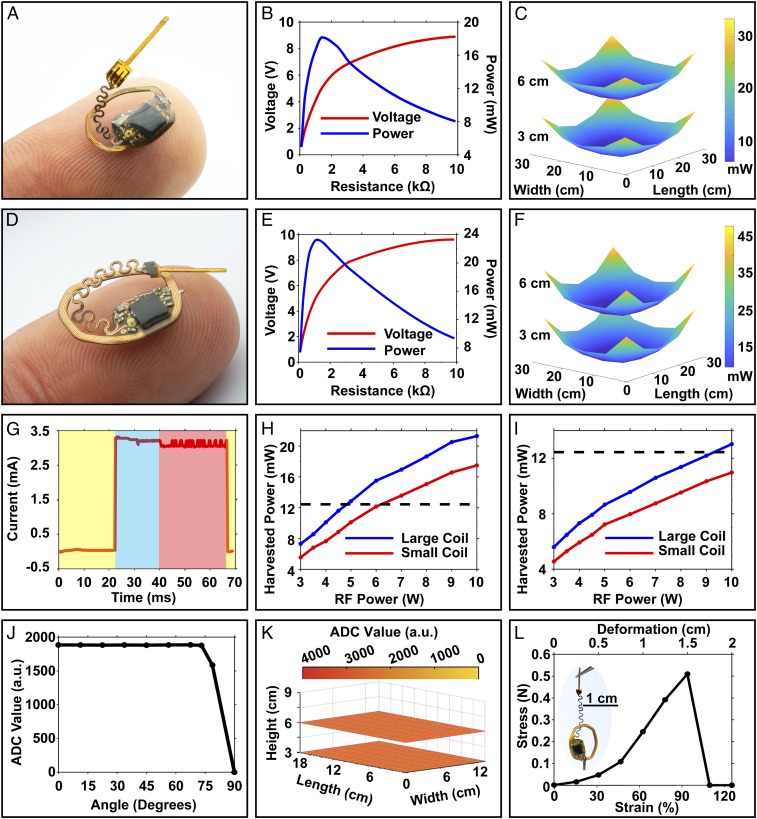Fig. 3.
(A–C) Highly miniaturized photometry device for implantation in small and young mice: (A) photograph of the device balancing on a finger. (B) Corresponding power vs. load curve in the center of an 18 × 12-cm arena with RF input power of 3 W. (C) Spatially resolved energy-harvesting capability of the miniaturized device with a two-turn primary antenna around an arena with dimensions of 28 × 28 cm and 5-W RF input. (D–F) Large photometry device for implantation in large adult mice: (D) photograph of the device balancing on a finger. (E) Corresponding power vs. load curve in the center of an 18 × 12-cm arena with RF input power of 3 W. (F) Spatially resolved energy-harvesting capability of the large device with a two-turn primary antenna around an arena with dimensions of 28 × 28 cm and 5-W RF input. (G) Time-resolved current consumption of the device during sleep (yellow), stimulation/recording (blue), and IR communication (red). (H) Harvesting performance of small and large devices in a 25.5 × 25.5-cm arena as a function of RF power input. (I) Harvesting performance of both devices in a 28 × 28-cm arena as a function of RF power input. (J) Angle-dependent ADC reading displayed in arbitrary units (a.u.) in the 18 × 12-cm arena at an input power of 6 W. (K) Height-dependent ADC reading in the 18 × 12-cm arena at an RF input power of 6 W. (L) Stress–strain curve of the serpentine interconnects.

